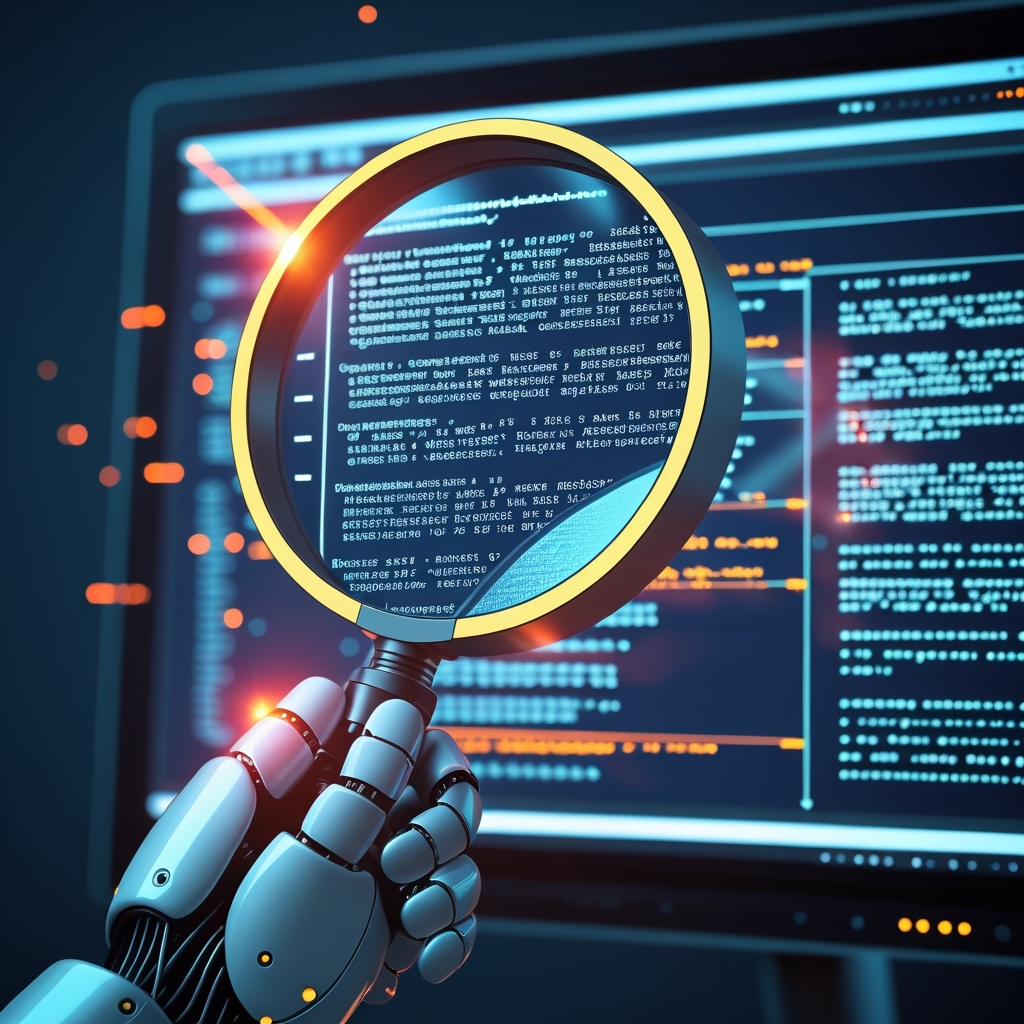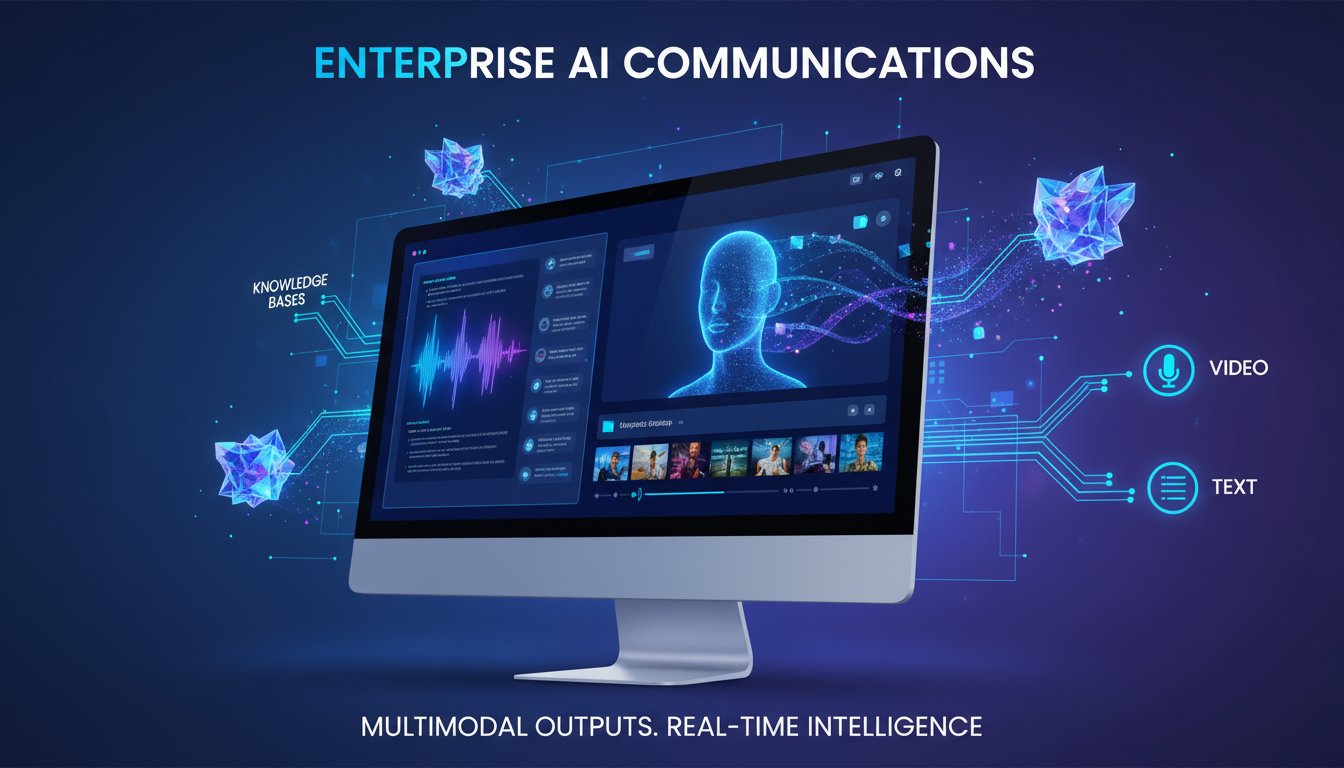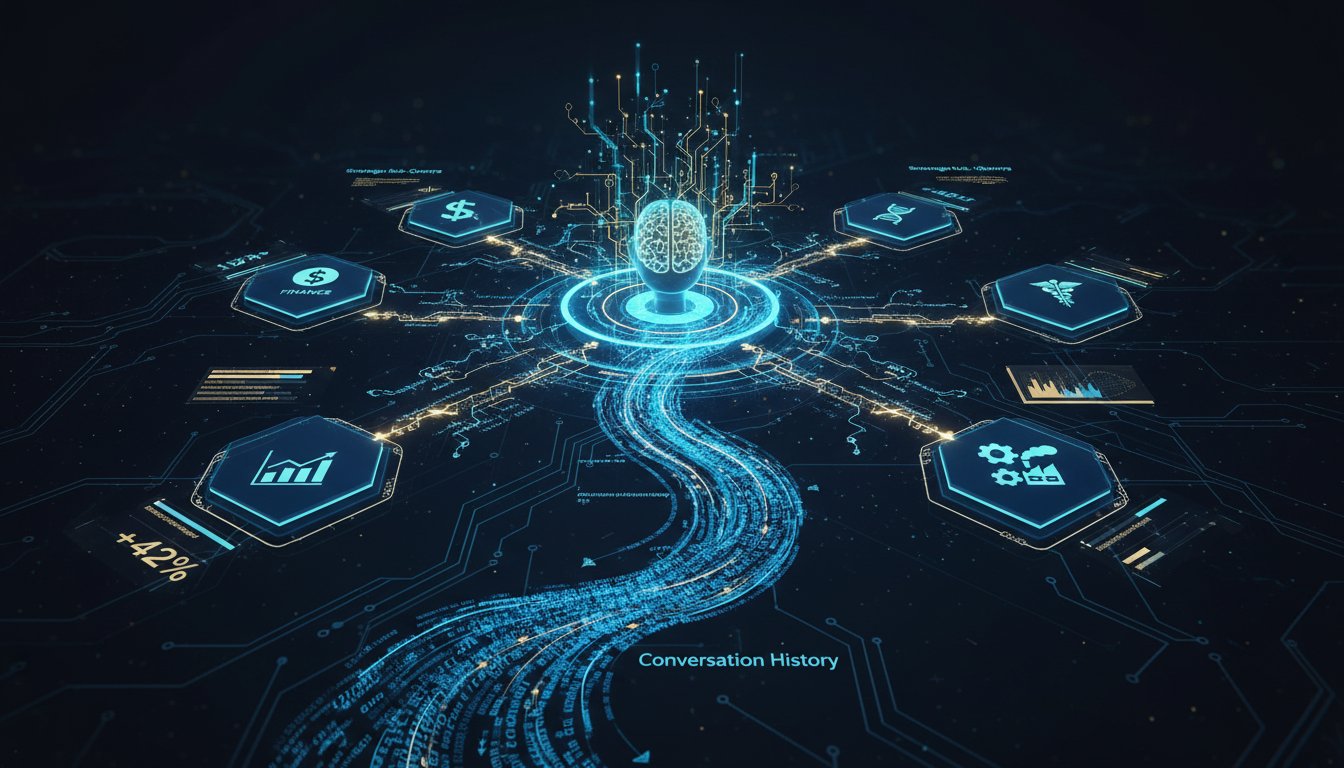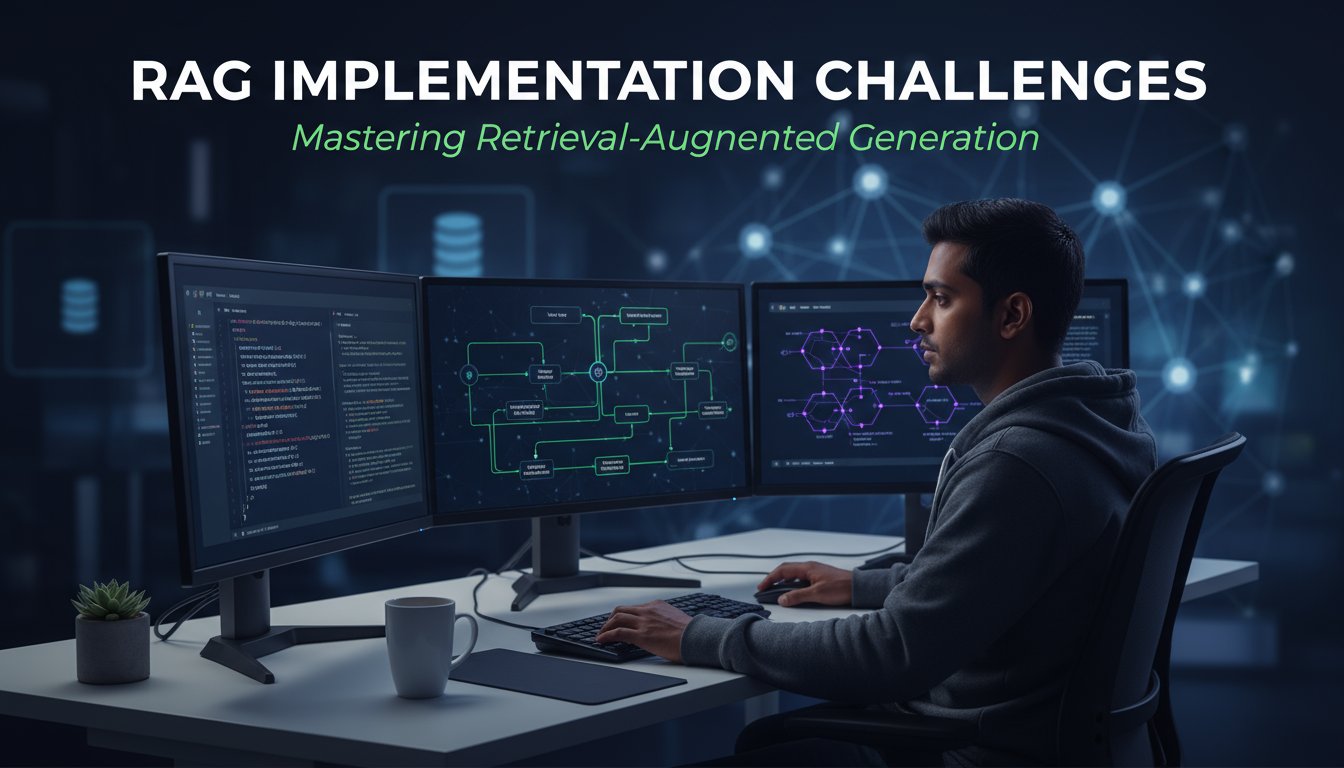Large Language Models (LLMs) have undeniably revolutionized how we interact with information and technology. They can write poetry, draft emails, summarize complex documents, and even generate code. Yet, for all their prowess, a shadow of doubt often lingers. Have you ever received an answer from an AI that sounded perfectly plausible, even eloquent, only to discover it was subtly incorrect or, worse, entirely fabricated? This phenomenon, often termed “hallucination,” is a persistent thorn in the side of AI adoption, especially within enterprise environments where accuracy and reliability are paramount. We marvel at their capabilities, but the inherent “black box” nature of some LLMs can lead to a crisis of confidence. How can we truly trust these powerful tools when their knowledge is frozen at a specific point in time, and their reasoning can sometimes be opaque?
The core challenge lies in the fundamental architecture of most standalone LLMs. They are trained on vast, but static, datasets. This means their knowledge is only as current as their last training run, rendering them incapable of accessing real-time information or your organization’s proprietary, up-to-the-minute data. This limitation breeds inaccuracy, irrelevance, and a significant barrier to deploying LLMs for mission-critical tasks. Imagine an AI assistant providing outdated legal advice or a customer service bot referencing discontinued products – the consequences can range from frustrating to financially damaging.
But what if there was a way to break free from these constraints? What if you could equip your LLMs with a dynamic, ever-relevant knowledge source, grounding their responses in verifiable facts? This is where Retrieval Augmented Generation (RAG) emerges not just as a novel technique, but as the veritable key to unlocking hyper-accurate LLM performance. RAG is a paradigm shift, transforming LLMs from eloquent guessers into informed, context-aware assistants. It works by connecting the LLM to external, up-to-date knowledge bases, retrieving relevant information in real-time to inform its responses.
In this article, we’ll delve deep into the world of RAG. We will demystify its mechanics, explore why it’s becoming indispensable for achieving trustworthy AI, and outline how mastering RAG can significantly elevate the accuracy and reliability of your LLM applications. Prepare to uncover the secret that turns promising AI potential into tangible, dependable results.
The Achilles’ Heel of Standalone LLMs: Why Accuracy Falters
While LLMs demonstrate impressive linguistic capabilities, their reliance on static training data and their inherent operational design present significant challenges to achieving consistent accuracy, especially in dynamic, real-world applications.
The Static Knowledge Problem
The most fundamental limitation of a standalone LLM is its fixed knowledge cutoff. As NVIDIA’s blog on RAG highlights, LLMs are trained on massive datasets, but this data represents a snapshot in time. Once the training is complete, the model doesn’t learn anything new. This means any information generated after its last training update is outside its awareness. For businesses that rely on current data – from market trends and regulatory changes to internal product updates – this static nature renders LLMs prone to providing outdated or irrelevant information.
The Hallucination Menace
LLM “hallucinations” are instances where the model generates text that is fluent and grammatically correct but factually incorrect or nonsensical. This occurs because LLMs are fundamentally designed to predict the next most probable word in a sequence, not necessarily to state a known fact. Without access to real-time, factual information to ground their responses, they can confidently generate plausible-sounding falsehoods. For example, an LLM might invent features for a product that don’t exist or cite non-existent sources, undermining user trust and the utility of the application.
The “Black Box” Dilemma and Lack of Verifiability
Another significant challenge is the often-opaque reasoning process of LLMs. When an LLM provides an answer, it can be difficult, if not impossible, to trace why it generated that specific response or from what part of its vast training data the information was derived. This “black box” nature makes it challenging to verify the accuracy of the output or debug errors. In enterprise settings, where accountability and an audit trail are crucial, this lack of transparency is a major hurdle. As AWS explains in its overview of RAG, the ability to cite sources, which RAG enables, is critical for building trust.
Unveiling RAG: The Architect of LLM Precision
Retrieval Augmented Generation (RAG) directly addresses the inherent limitations of standalone LLMs by integrating an information retrieval system with the generative capabilities of the LLM. This synergy allows the model to access and utilize external, up-to-date knowledge sources before generating a response, leading to a dramatic improvement in accuracy and relevance.
What Exactly is Retrieval Augmented Generation?
At its core, RAG is a technique that enhances the knowledge base of an LLM by dynamically fetching relevant information from external sources at inference time. Instead of relying solely on its pre-trained (and potentially outdated) internal knowledge, the LLM is provided with specific, contextually appropriate snippets of information related to the user’s query. As several Medium articles on RAG, such as “RAG in AI: How Retrieval-Augmented Generation is Revolutionizing Accuracy and Trust,” emphasize, this process grounds the LLM’s output in factual, current data, making it more reliable and trustworthy.
The Core Mechanics: How RAG Works Step-by-Step
The RAG process typically involves the following key stages:
- User Query: The process begins when a user submits a query or prompt to the LLM-powered application.
- Retrieval: Instead of directly feeding the query to the LLM, the RAG system first uses the query to search an external knowledge base. This knowledge base can consist of various data sources: company documents, product manuals, databases, websites, or even real-time data streams. This search is often performed using sophisticated techniques like semantic search over vector embeddings. The input data is typically broken down into manageable “chunks,” and each chunk is converted into a numerical representation (embedding) that captures its semantic meaning. When a user query comes in, it too is converted into an embedding, and the system searches for chunks with the most similar embeddings. Tools like LangChain and LlamaIndex offer robust functionalities for implementing this retrieval step.
- Augmentation: The most relevant information retrieved from the knowledge base is then combined with the original user query. This augmented prompt, now rich with specific context, is passed to the LLM.
- Generation: Finally, the LLM uses this augmented prompt – the original query plus the retrieved factual context – to generate a response. Because the LLM now has access to specific, relevant information, its output is far more likely to be accurate, detailed, and contextually appropriate.
Why RAG is a Game-Changer for Accuracy
The impact of RAG on LLM accuracy is profound for several reasons:
- Access to Real-Time/Dynamic Information: RAG systems can connect to knowledge bases that are continuously updated. This ensures the LLM isn’t relying on stale data from its initial training, making its responses timely and relevant.
- Contextual Grounding Reduces Hallucinations: By providing specific, factual context directly related to the query, RAG significantly reduces the likelihood of the LLM inventing information. The model is guided by the retrieved data, steering it away from purely probabilistic (and potentially erroneous) generation.
- Improved Transparency and Traceability: A key advantage, highlighted by sources like Glean’s explanation of RAG, is that many RAG systems can cite the sources of the information used to generate the response. This allows users to verify the accuracy of the LLM’s output and builds trust by making the AI’s reasoning process more transparent.
Mastering RAG: Key Components and Best Practices
Implementing an effective RAG system involves more than just connecting an LLM to a data source. It requires careful consideration of several components and adherence to best practices to ensure optimal performance and accuracy.
The Foundation: Building a High-Quality Knowledge Base
The quality of your RAG system’s output is directly proportional to the quality of its knowledge base. This is arguably the most critical aspect of mastering RAG.
- Data Relevance and Cleanliness: Ensure the data sources are accurate, up-to-date, and directly relevant to the intended application. Noisy, outdated, or irrelevant data will lead to poor retrieval and, consequently, inaccurate LLM responses. As discussed in Reddit threads like “Improve Your Knowledge Base for Retrieval Augmented Generation?”, data preprocessing and cleaning are vital steps.
- Effective Chunking Strategies: Breaking down large documents into smaller, semantically coherent chunks is crucial for effective retrieval. The size and method of chunking (e.g., fixed size, sentence-based, paragraph-based) can significantly impact the relevance of retrieved context. Experimentation is often needed to find the optimal strategy for your specific dataset.
- Rich Metadata: Incorporating metadata (e.g., source, creation date, author, keywords) with your data chunks can greatly enhance retrieval precision and allow for more sophisticated filtering and source attribution.
The Engine: Choosing and Optimizing Your Retriever
The retriever’s job is to find the most relevant information from the knowledge base to answer a given query. Its effectiveness is paramount.
- Vector Embeddings and Similarity Search: Most modern RAG systems use vector embeddings to represent the semantic meaning of text. Choosing the right embedding model (e.g., Sentence-BERT, OpenAI embeddings) and vector database (e.g., Pinecone, Weaviate, FAISS) is essential for efficient and accurate similarity search.
- Hybrid Search Approaches: Sometimes, combining keyword-based search with semantic search (a hybrid approach) can yield better results, especially for queries containing specific entities or jargon that semantic search alone might miss.
- Re-ranking and Filtering: After initial retrieval, a re-ranking step can be applied to further refine the order of retrieved chunks based on relevance or other criteria. Filtering based on metadata can also narrow down the search space.
The Maestro: The Large Language Model in RAG
While the retriever provides the context, the LLM is still responsible for synthesizing that information and generating a coherent, accurate response.
- Selecting the Right LLM: Different LLMs have varying strengths in terms of reasoning, instruction following, and handling long contexts. Choose an LLM that is well-suited for your specific RAG application and the nature of the information it will be processing.
- Prompt Engineering for RAG: Crafting effective prompts that instruct the LLM on how to use the retrieved context is crucial. The prompt should clearly guide the LLM to base its answer on the provided information and, if necessary, to indicate when the context doesn’t contain the answer.
Continuous Improvement: Monitoring and Iteration
RAG systems are not “set it and forget it.” Continuous monitoring and iteration are key to maintaining high accuracy over time.
- Evaluating RAG System Performance: Develop metrics to assess the end-to-end performance, including retrieval relevance (are the right chunks being fetched?) and generation quality (is the LLM using the context correctly and producing accurate answers?). Insights from community discussions, such as “RAG in Production: Best Practices for Robust and Scalable Systems” on Reddit, often highlight the importance of robust evaluation frameworks.
- Feedback Loops: Implement mechanisms for users to provide feedback on the accuracy and relevance of the RAG system’s responses. This feedback is invaluable for identifying areas for improvement, whether in the knowledge base, retrieval strategy, or LLM prompting.
RAG in Action: Beyond Theory to Tangible Benefits
The principles of RAG translate into powerful, practical applications across various domains, fundamentally changing how organizations leverage AI for accuracy and efficiency.
Enhanced Customer Support Bots
Customer support chatbots powered by RAG can provide significantly more accurate and helpful responses. Instead of relying on pre-programmed scripts or limited LLM knowledge, they can access real-time product information, troubleshooting guides, and customer history from company databases. This means customers get up-to-date answers to their specific queries, leading to higher satisfaction and reduced workload for human agents.
Intelligent Document Search and Summarization
Enterprises often possess vast repositories of internal documents, reports, and research papers. RAG can power intelligent search systems that not only find relevant documents but also synthesize information from multiple sources to provide concise summaries or answer complex questions. This drastically improves knowledge discovery and accessibility for employees, as highlighted by the DigitalOcean article on Agentic RAG which touches upon complex task execution using retrieved knowledge.
Personalized Content Generation
RAG enables the generation of highly personalized content. For example, a financial advisory tool could use RAG to access a client’s investment portfolio and current market data to provide tailored advice. Similarly, e-commerce platforms can generate personalized product recommendations and descriptions grounded in a user’s browsing history and product specifications.
Fact-Checking and Research Assistance
In fields like journalism, legal research, or academic study, RAG can serve as a powerful assistant. By retrieving information from trusted sources, it can help verify claims, find supporting evidence, and provide context for complex topics, ensuring that the generated output is grounded in verifiable facts, a core benefit often cited in foundational RAG explanations (NVIDIA, AWS).
These examples illustrate just a fraction of RAG’s potential. By grounding LLM outputs in specific, verifiable data, RAG transforms them from general-purpose language tools into specialized, high-accuracy information systems tailored to specific enterprise needs.
Conclusion: From Mystery to Mastery in LLM Accuracy
The journey of Large Language Models has been remarkable, but their path to becoming truly indispensable enterprise tools has been hindered by concerns over accuracy, timeliness, and trustworthiness. Standalone LLMs, for all their linguistic fluency, operate with a crucial handicap: a static, often outdated, view of the world and an inability to transparently access or cite specific, current information.
Retrieval Augmented Generation decisively addresses these shortcomings. By seamlessly integrating a dynamic retrieval mechanism with the generative power of LLMs, RAG ensures that AI-generated content is not just plausible but also grounded in factual, relevant, and up-to-date information. It transforms the LLM from a know-it-all with a potentially flawed memory into an expert researcher with instant access to a comprehensive library. From improving customer service to enabling sophisticated internal knowledge management and powering personalized experiences, RAG elevates the reliability and utility of AI applications.
Mastering RAG is therefore not merely about adopting a new technique; it’s about fundamentally enhancing the intelligence, accountability, and ultimately, the value of your AI systems. The “secret” to hyper-accurate LLMs is no longer a mystery—it’s the deliberate and skilled application of Retrieval Augmented Generation. By focusing on high-quality knowledge bases, optimized retrieval strategies, and thoughtful LLM integration, organizations can unlock a new era of AI performance built on a foundation of trust and precision.




